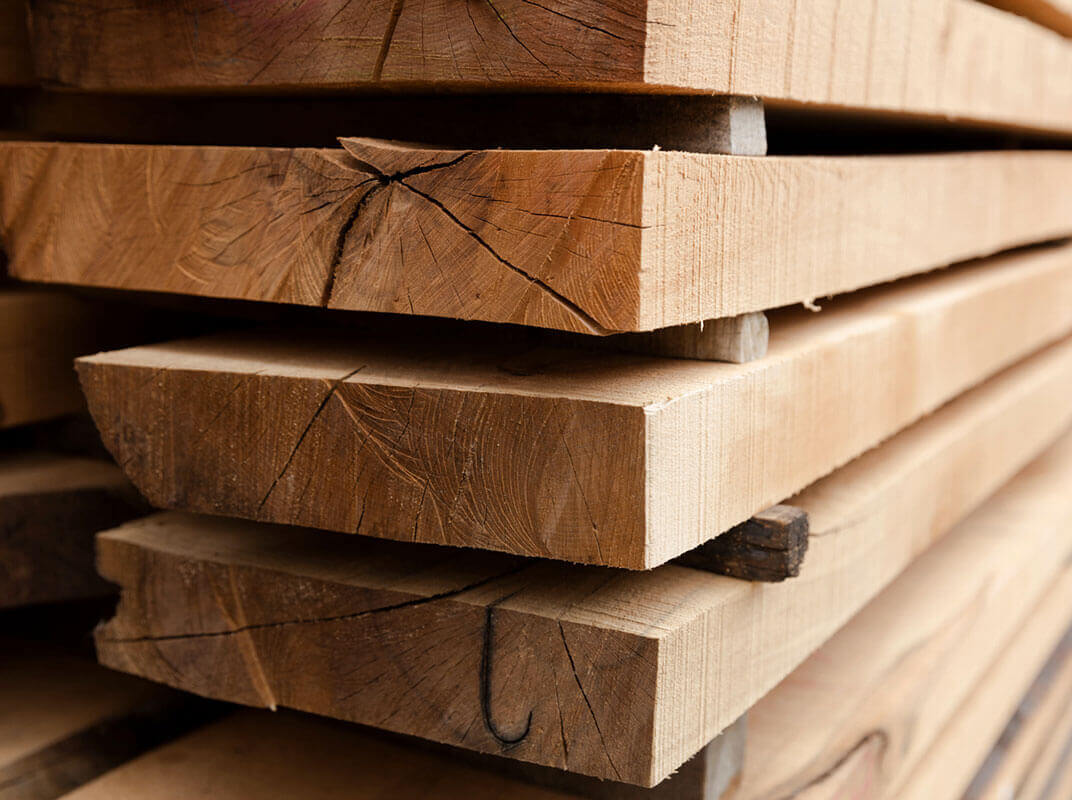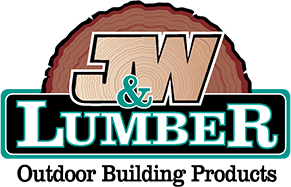
If you’re thinking of starting a lumber project or are already in the middle, you should spend some time at the lumber yard familiarizing yourself with materials, learning about new techniques and asking lots of questions. All the technical terms and industry jargon floating around can be intimidating. But if you’re a DIYer, we want you to feel comfortable heading down to your local lumber supply company and getting what you need.
Here’s a rundown of common lumber terms that will make your trip to the lumber yard a little easier. Familiarize yourself with some of these terms today and soon you’ll be talking like a pro.
Texture
When we refer to the texture of lumber, we’re talking about both the look and the feel of the material. The same type of wood can be milled to different textures, so textural changes reflect varying degrees of processing.
Rough – Just like it sounds, “rough” lumber has a coarse feel that provides a more rustic look. Often used for patio covers, fences, garden boxes and other outdoor applications, planks will have thicker dimensions that are closer to the nominal size of the lumber.
Surfaced – The same exact original plank listed above can be further planed at the mill to create a smoother finish, which is called “surfaced lumber.” This is normally the type of lumber you’ll find in big box stores. Surfaced lumber is used for finish projects, decks, patio furniture, railings and framing. Whereas rough lumber can have some slight variation in size depending on which lumber supply company you get it from, the final dimensions of surfaced lumber are industry standards that will be the same from almost any supplier.
Resawn – Resawn wood is run through a mill just prior to purchase to freshen up its surface. Giving it a fresh cut brightens up the wood, leaving it sharp and uniform.
Remanned – Short for “remanufactured,” remanned lumber is wood that has been further processed. Sometimes people mistakenly call this “rough” lumber, but it’s really wood that has been engineered by human hands, not natural processes. One common production method is to break up lumber into small chips or fibers and press them into rough-surfaced board. This remanned wood is most commonly used in industrial applications.
Pressure Treated (“PT”)
This wood that has been treated to last longer, particularly outdoors. Pressure treatment applications help protect the lumber against fire, pests, and moisture. Pressure treating lumber involves etching small divots into the surface of the wood then placing the lumber into a giant vacuum with a special treatment solution. When the air is extracted, the wood is imbued with the solution. The rating on PT wood is based on how far the treatment has penetrated the wood. Ground contact PT has a higher penetration rating.
Top DIY questions answered by our lumber experts.
Bleed
All woods contain natural oils, called tannins. Over time, tannins work their way out of the wood—this is called “bleed”. If you’ve ever seen grayed out wood on old fences, you’re actually looking at the tannins rising to the surface. In some woods, the tannins are light and barely noticeable. In many hardwoods, the tannins are dark and thick. Many decking woods can bleed out, and you’ll notice this discoloration below the surface of the deck.
Measurement
Measuring lumber is one of the most important things you can do to ensure a successful project, but we’ll be honest: standard industry lumber measurements can get a little tricky. Here are the terms you’ll hear down at your nearby lumber supply company—and what they really mean.
Learn 5 simple steps to estimate your next lumber project.
On-center (“OC”) — This refers to the distance between two sections of whatever you’re building and indicates that you should measure center-to-center of each board. So, if you’re building a fence, “OC” means measuring from the center of one post to the center of the next post—studs in a house frame are the same. This is important because mistakenly measuring from inner/outer edge to inner/outer edge of ceiling rafters, house framing, or any other structural support assembly will result in a weaker final product that will fail to meet code.
Lineal Feet – This common term is used two different ways:
- For projects – Referring to distance around a perimeter of something (ex. fence or hand railing).
- For lumber pricing – When referring to the lineal feet of lumber itself, this usually means the “length” of the wood, which is used to derive pricing. For example, a plank that is 2”x4”x10’ long = 10 lineal feet. 8”x8”x10’ also equals 10 lineal feet. Because this is how lumber is priced, knowing the lineal feet in the planks you’re buying will help you accurately estimate the cost of your project materials.
Square feet – This is the term used to describe the surface area of a finished project. Square footage is derived by multiplying length x width.
Nominal size – “Nominal” is related to the word “name,” so this is what the dimensions of the wood are called, whether or not the plank actually matches that exact size. Rough lumber is closer in true dimension to its nominal size, while the additional planning of surface lumber usually drops it size down up to ½ inch. Therefore, a surface lumber 2×4 might actually be closer to 1.5”x3.5”. Lumber labels in California now list both nominal and true size, so you’ll know exactly what you’re getting.
1-by, 2-by, 4-by, 6-by, 8-by… —Each of these common measurements refers to the thickness of the board. Therefore, everything in the “1-by” family will be 1-inch thick. Everything in the “2-by family” will be two inches thick, etc.
Knowing your way around common lumber terms goes a long way toward increasing your confidence in your next home improvement project. With these phrases in mind, head down to the lumber yard and start talking shop.
Have questions about lumber or building terms and you’re not sure who to ask? Our friendly lumber experts are available to help.

It’s good to know that lineal feet usually refers to the length of the wood when used in the context of pricing. My uncle is looking for a logging and timber management service to work with for the several acres of land he purchased last month. I’ll pass along this info in case it’s helpful for him to use as a reference with a timber service soon!
You didn’t discuss “board feet” or “granulated”.